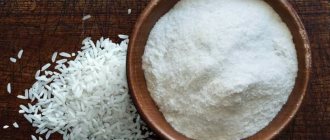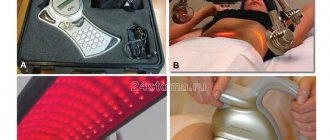From this article you will learn:
- Determination of water and electrolyte balance
- Causes of water imbalance
- Symptoms of lack of water in the body
- Methods for diagnosing water imbalance
- 7 tips for restoring water balance in the human body
- 10 recommendations for maintaining water balance in the human body
- Formula for calculating the required amount of water by weight
The balance of water in the human body is very important. For clarity, let's look at the numbers: water makes up 60-80% of the total mass of the entire body, its main part is contained in cells. The brain consists of 80% of it, blood - 92%, gastric juice - 99%. Therefore, water imbalance leads to serious disorders and health problems.
In this article, we have collected valuable information that will help to detect a lack of fluid in the body in time, as well as prevent it. You will learn about healthy habits and will be able to calculate the amount of water you need daily by weight.
Determination of water and electrolyte balance
Determination of water-electrolyte balance
The ratio between the amount of water entering the body and the amount removed from it over the same time period is considered water-electrolyte balance. With normal operation of all organs and systems, there should be no difference between these indicators. At the same time, lack of water leads to negative consequences. A person with impaired water balance notes a deterioration in concentration and a decrease in the speed of solving logical problems.
Normally, the amount of fluid released by the body should be equal to that received. If you don’t drink enough water during the day, the balance will be negative, as a result, the metabolism will slow down, the blood will become thicker, will not cope with the distribution of oxygen, the pulse will increase and the body temperature will rise. That is, our body will receive additional stress, but overall performance will decrease.
But exceeding the daily norm is also unsafe. The blood thins, resulting in increased stress on the cardiovascular system. The concentration of gastric juice decreases, which leads to disturbances in the digestive processes. With such a violation of the water balance in the human body, the load on the excretory system increases - excess fluid is excreted through sweat and urine. Not only the kidneys suffer, they work too hard, many useful substances are removed from the body. As a result, the water-salt balance is disrupted, which weakens the body.
You should not drink a lot and during increased physical activity. Due to severe muscle fatigue, you can feel cramps. If you have noticed, athletes do not drink water during training and performances, but only rinse their mouths to avoid stress on the heart. This technique can be taken into account while jogging or training.
The role of water in the human body
Water is found in every part of the complex human body. To understand why there is so much water, let's first consider its main functions.
Perhaps the main task of water is its participation in metabolism. All substances that enter the human stomach undergo a number of complex changes in the digestive system. As a result of this synthesis, amino acids are obtained from proteins, glycerol and fatty acids from fats, and glucose from starch. As you guessed, all these processes take place in water.
The second, no less important function is to maintain osmotic pressure inside the cell, and in fact, its integrity. Since the cell must absorb and remove substances, it is a semi-permeable membrane. If we describe this process using cells as an example, it will look something like this. The pressure generated by the solution inside the cell must be equal to the pressure outside the cell. When the body is dehydrated or solutions with too high a salt content are administered intravenously, the cells will shrink and release water out. If too much pure water or a solution with low osmotic pressure (low salt content) is administered intravenously, the cell will draw in water in order to balance the pressure.
The acid-base balance in the human body is also an important factor that is regulated by the aquatic environment. For example, saliva, which is an aqueous solution, can reach a pH level of 8, and gastric juice has a strongly acidic environment with a pH of 1.5 - 2.
Heat exchange and thermoregulation also occur thanks to water. The principles of thermoregulation are to increase heat transfer when body temperature rises, and to maintain it as much as possible when it decreases. These processes can be observed when it is hot outside, that is, excess heat comes from outside, or during physical activity, when excess energy is released due to the breakdown of sugars. Then the person begins to sweat and secrete sweat, that is, water, in order to remove excess heat from the body.
The transport function of water is to ensure the delivery of nutrients by blood, lymph, and also to remove waste products - urine, sweat, etc.
Causes of water imbalance
Causes of water imbalance
The water-salt balance is disrupted when fluid is improperly distributed throughout the body or when there is a large loss of fluid. This leads to a deficiency of microelements that are responsible for metabolic processes.
The calcium concentration may drop sharply for the following reasons:
- absence of the thyroid gland or failure of its functioning;
- when treated with medications containing radioactive iodine.
Sodium concentration may also decrease for the following reasons:
- excessive accumulation of fluid in body tissues due to various pathological conditions or when the daily water intake is exceeded;
- therapy with diuretics (especially without permission, without the supervision of a doctor);
- development of pathological conditions accompanied by increased urination (diabetes, for example);
- conditions that occur with fluid loss (increased sweating, diarrhea, etc.).
Pathological potassium deficiency sometimes occurs due to alcohol abuse, corticosteroid use, or conditions such as:
- insulin therapy;
- liver failure;
- decreased performance of the thyroid gland;
- malfunction of the adrenal glands;
- general alkalization of the body.
This is interesting!
“ORP of water: norm and methods of obtaining healthy water” Read more
But exceeding the norm of potassium can also upset the balance of water in the human body.
Treatment of pathology
If the water balance is disturbed and the daily indicator can no longer be brought back to normal on your own, then the help of a specialist will be required. Depending on the severity of the patient and concomitant diseases, the following methods are used:
- Medicines. There are medications and vitamins that normalize the water-salt balance. They are drunk for a month. If this result is not enough, then take a short break of several weeks, and then repeat it again.
- Chemistry. Saline solutions accumulate water and restore the lack of substances. There are a number of contraindications for their use, so prescribing them yourself is dangerous. After the examination, the doctor determines the regimen and frequency of their administration.
- Hospital In severe cases, people are hospitalized to restore balance through IVs, intramuscular or subcutaneous injections.
- Diet. Patients are given a recommended list of foods with magnesium, potassium and zinc. The diet is thought out after a blood test and identification of concomitant diseases.
- Folk remedies. They are used as an auxiliary measure or if the condition has not worsened very much. To restore daily water balance, use an infusion of garlic and lemon, decoctions based on parsley or celery leaves, black currants, and also steam buckwheat in a special way.
After completing the calculations, there are no questions left on this topic, but it is worth remembering that you do not need to drink the entire amount of the required liquid at once. This will only make the condition worse. For normal absorption, distribute water throughout the day and drink it little by little, and also review your diet and sleep patterns. If these measures do not help, then you should consult a doctor for a comprehensive examination.
Symptoms of lack of water in the body
Symptoms of lack of water in the body
As noted above, the human body consists of approximately 80% water. And when the water balance changes even by 3-5%, this manifests itself as:
- headaches;
- rapid heartbeat;
- blood pressure surges;
- weakness, drowsiness, decreased productivity;
- dry skin, the appearance of clear and deep wrinkles;
- swelling of the face and lower extremities;
- exacerbation of chronic diseases;
- decreased immunity and increased incidence of colds;
- sensations of dry mouth and thirst;
- the appearance of bad breath;
- sensation of tongue being coated;
- decreased brain activity: depression, sleep disturbances, attention problems;
- joint pain and muscle spasms;
- feelings of nausea and constipation.
If a water deficit of 10% of the norm occurs, a person must be immediately hospitalized, his condition is assessed as severe dehydration.
But each body reacts differently to water imbalance. These may be all of the symptoms listed above or only some of them. In some cases, a person does not feel anything at all, and after a while his condition worsens sharply.
How to calculate the water requirement in the body?
Nutritionists recommend drinking about 40 ml of water per 1 kg of body weight. Since such a calculation algorithm is considered not entirely correct, we will talk about another option for determining this value.
First, a person will need to determine their daily urine output. This indicator shows how much urine is produced in 24 hours. The value allows you to identify pathologies and diagnose kidney function. In a healthy body it is about 1.5 liters. Diuresis is calculated as follows:
- At 6 or 7 am a person goes to the toilet to eliminate all the fluid that has accumulated overnight.
- Each next time he collects urine in a container with gradations so that he can immediately see the volume.
- Observations and collection continue until 6 or 7 am the next day.
During this, you should not change your habits or drinking regimen, otherwise the data will be unreliable.
Methods for diagnosing water imbalance
Methods for diagnosing water imbalance
Our body tries in every way to maintain water balance. This is possible only in two ways: by regulating metabolism (to slow down water use) and by generally reducing fluid output during urination.
It is difficult to independently understand what the water balance in the human body should be without additional research methods. Perhaps this is only based on indirect evidence, observing the indicators of water excretion by the body.
Dehydration may be indicated by the sour smell of sweat and its viscous consistency. The next indicator is urine volume. It should be at least 1.5 or 2.5 liters per day. Color and smell do not matter; they can fluctuate throughout the day, but the quantity must be stable.
Another method is weighing on bioimpedance scales. They are always available in nutritionists' offices. The scale displays how hydrated the body is, the percentage of bone, muscle and fat mass, as well as a person’s biological age.
But you can accurately find out the body’s water balance and get clear indicators only in the clinic by taking the appropriate blood and urine tests, which, if necessary, are prescribed by a nutritionist.
Causes and symptoms of the disorder
Water-electrolyte balance changes with overhydration or dehydration. In the first case, fluid accumulates in excess and is almost not excreted naturally. It is located in the intercellular space, its ratio inside the cells increases and swelling occurs. If this affects nerve cells or endings, then mental problems or seizures begin.
During dehydration, dehydration occurs. The blood thickens, it does not flow to some tissues, and blood clots form. If the disorder exceeds 20% of body weight, the person dies.
How much of a person is made of water?
Information about what percentage of the human body consists of water is contained in a school biology textbook. From the very first pages, his students are informed that the human body contains at least ninety percent water. But in reality, this postulate is not entirely true. The percentage of water in the human body depends on:
- age (the body of an elderly person contains 50% water, a newborn – 89% or more);
- gender (a woman’s body contains several percent more fluid than a man’s body);
- living conditions;
- salt content in the liquid;
- amount of fluid consumed;
- diseases;
- physical activity;
- metabolic rates in different living organisms;
- weight.
Thus, in the muscles and joints (knee joint) of an adult, the fluid content ranges between 50 and 75%. Bones are only 20-30% water. In the abdominal cavity the amount of water is 2 times greater. Thus, water in the liver is 83%. The brain consists of 75-80% water (instead of the brain - water). The largest amount of water in the blood is at least 90%.
But, despite such high levels of fluid content in various parts of the body, scientists have determined that the norm for an adult is if his body contains 60% water and 40% organic and inorganic substances. There is indeed more water in the brain than in the rest of the body, but as a person ages, high levels decrease, and the balance between fluid and other substances is disrupted. For this reason, the bodies of some old people look withered.
Individual needs of the body
The first thing to remember is that all rules and standards are relevant only for the average norm. But each person is individual. This means that you will have to understand the standards for fluid consumption on your own. The required minimum of 2000 ml is relevant only for healthy girls weighing 50 kg. So how much water should a woman have in her body for its normal functioning? Individual needs matter here. As you age, it becomes more difficult to replenish the balance. The tissues require more water, and the weight gradually begins to increase.
To keep your body strong, your muscles elastic, and your skin glowing with health, you need to consume at least 300 ml of liquid per 10 kg of weight. Don't feel like drinking at all? Your body may be used to getting moisture from other sources. Count total volumes, not just net water consumption.










